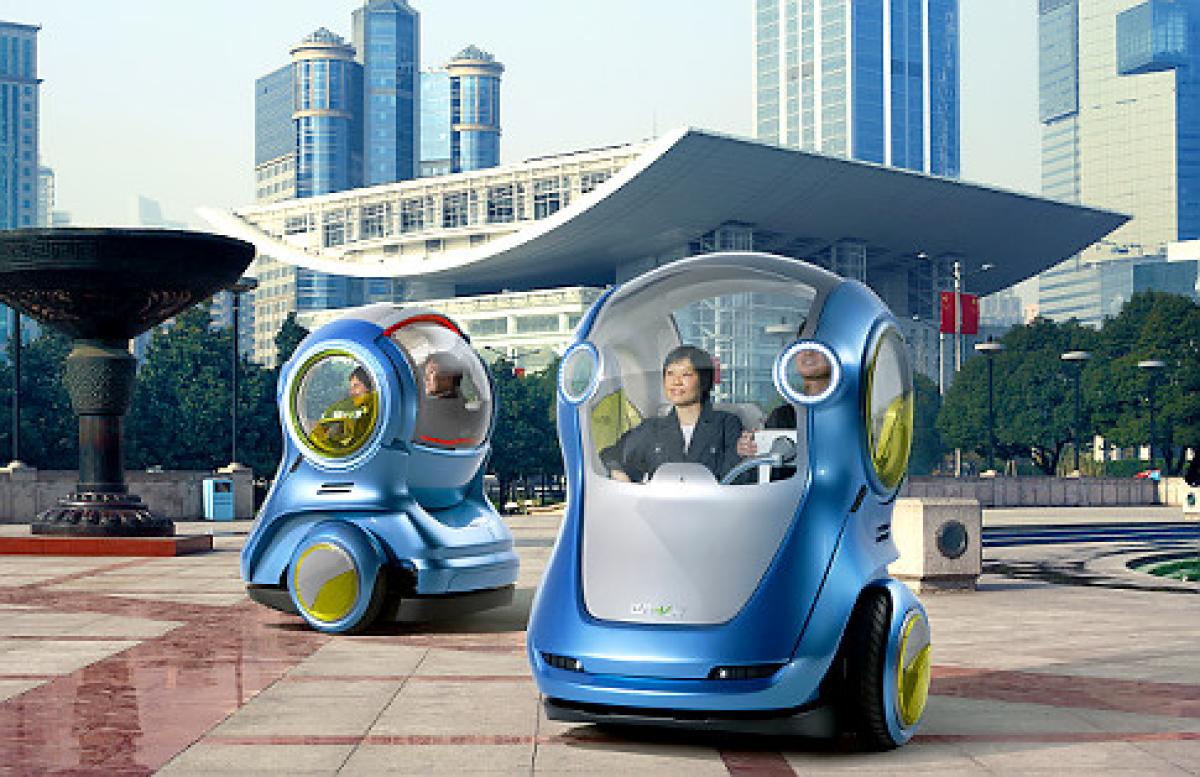The Clothing Printer is only a concept at the moment, but in the distant future, it would enable people to create textiles that match their fashion taste perfectly.
If you come to think about it, cloth printing would not be much different to 3D printing. The only major difference is that while 3D printers use plastic threads, the clothing printer would make use of cotton threads.
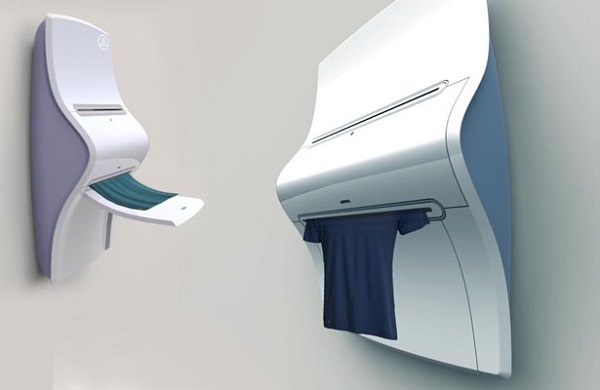
Joshua Harris, the designer of the Clothing Printer concept thinks that making our own clothes at home in a manner that takes little time and resources will become a necessity by 2050. Considering that more and more people move to the cities, the fashion trends will change more rapidly, thus determining people to be constantly looking for new clothes.
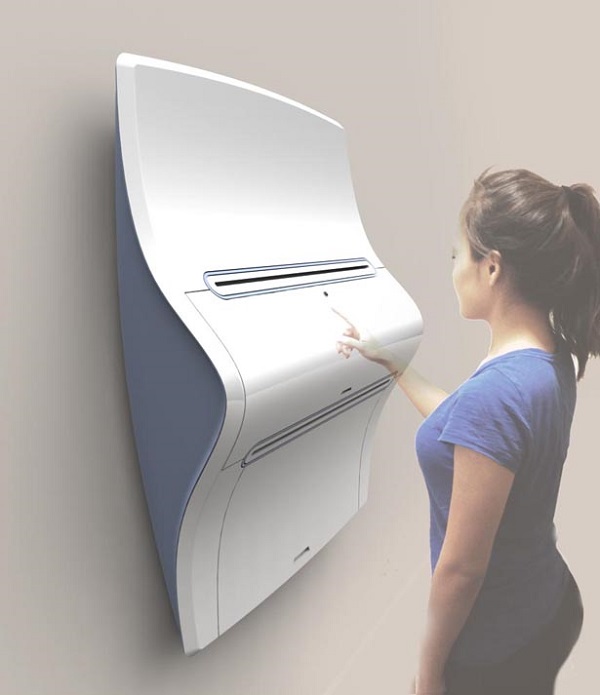
This is where the spark of genius comes into play. The Clothing Printer would not only create new clothes, but also repurpose the old ones, who went out of fashion or deteriorated.

The design of the thread cartridges is also eye catching, and the same thing could also be said about the name of the threads. Around 7 of these cartridges would be placed in special slots inside the printer. When it comes to ink printers, it is a known fact that they use a limited number of colors (usually yellow, cyan, magenta and black) that are combined to obtain numerous other colors and shades. I’m not sure if this would also be the case with different colored cotton threads, for example.
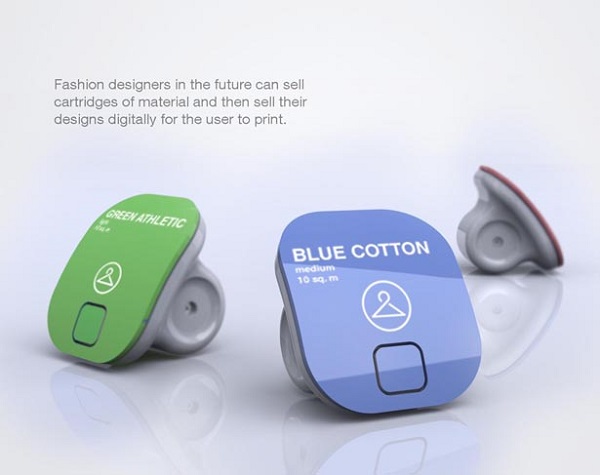
The designer of the concept considers that it would be a great idea if fashion designers provided the cartridges for their clothes, in case they have any copyrighted shades. Upon getting home, the users would download the cloth designs from the Internet and upload them to the printer.

Pictured below is a scenario that while highly desirable, it is also very unrealistic. Joshua Harris imagines the users of the Clothing Printer putting the clothes back into the device so that they are broken down into threads and cleaned. At the end of this operation, the thread would get into the cartridge, for future use. While this is currently possible with plastic and 3D printers, it would be a totally different thing in the case of a clothing printer.
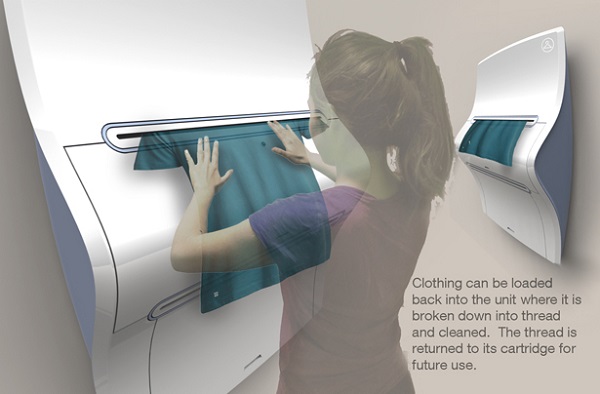
Given how fast things evolve in our world, I am absolutely sure that cloth printing will become a reality sooner than what the designer of this concept predicted. I still think that the concept is brilliant, and while the design might not be mind-blowing, it is the idea and the functionality of the device that should be appreciated.
If you liked this post, please check the MakerBot personal portrait 3D printer and the 3D printed vinyl discs.




